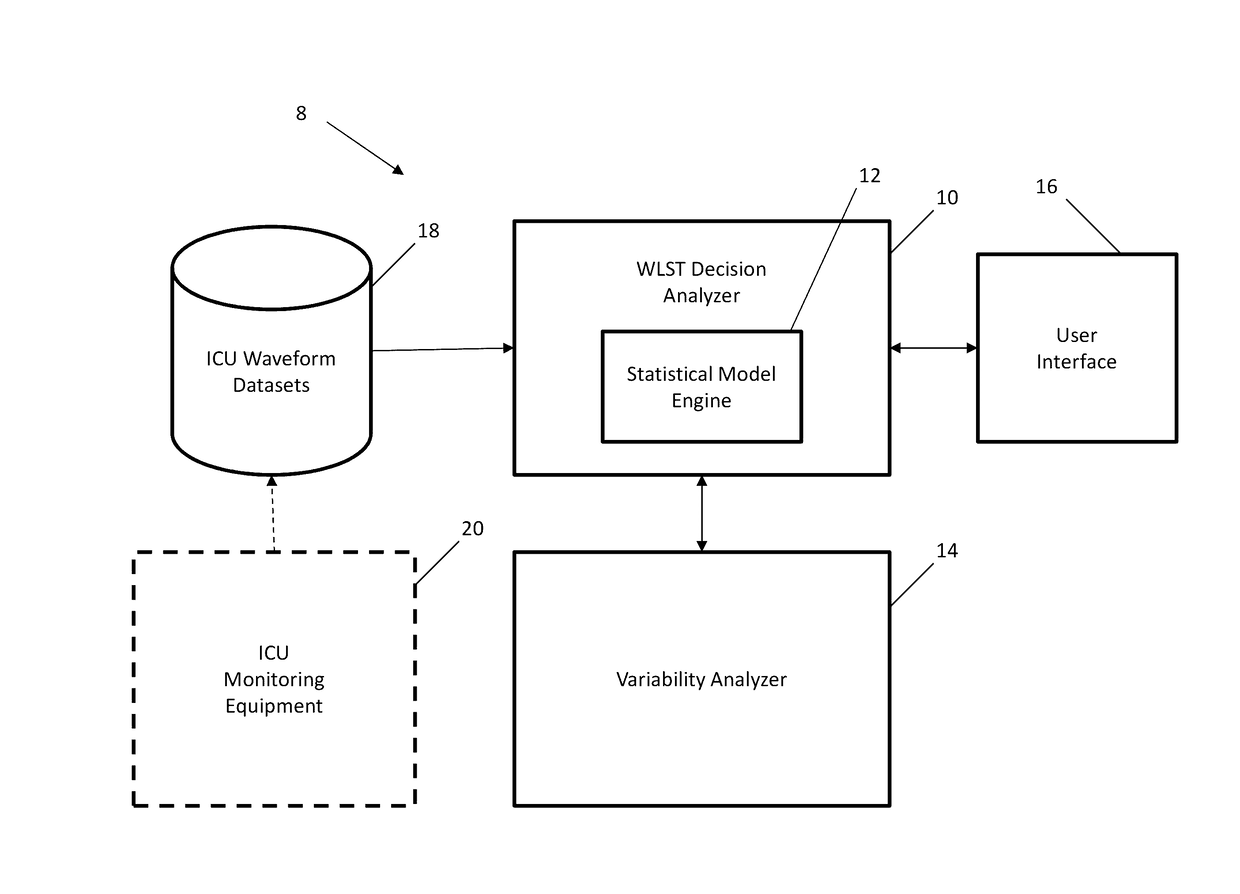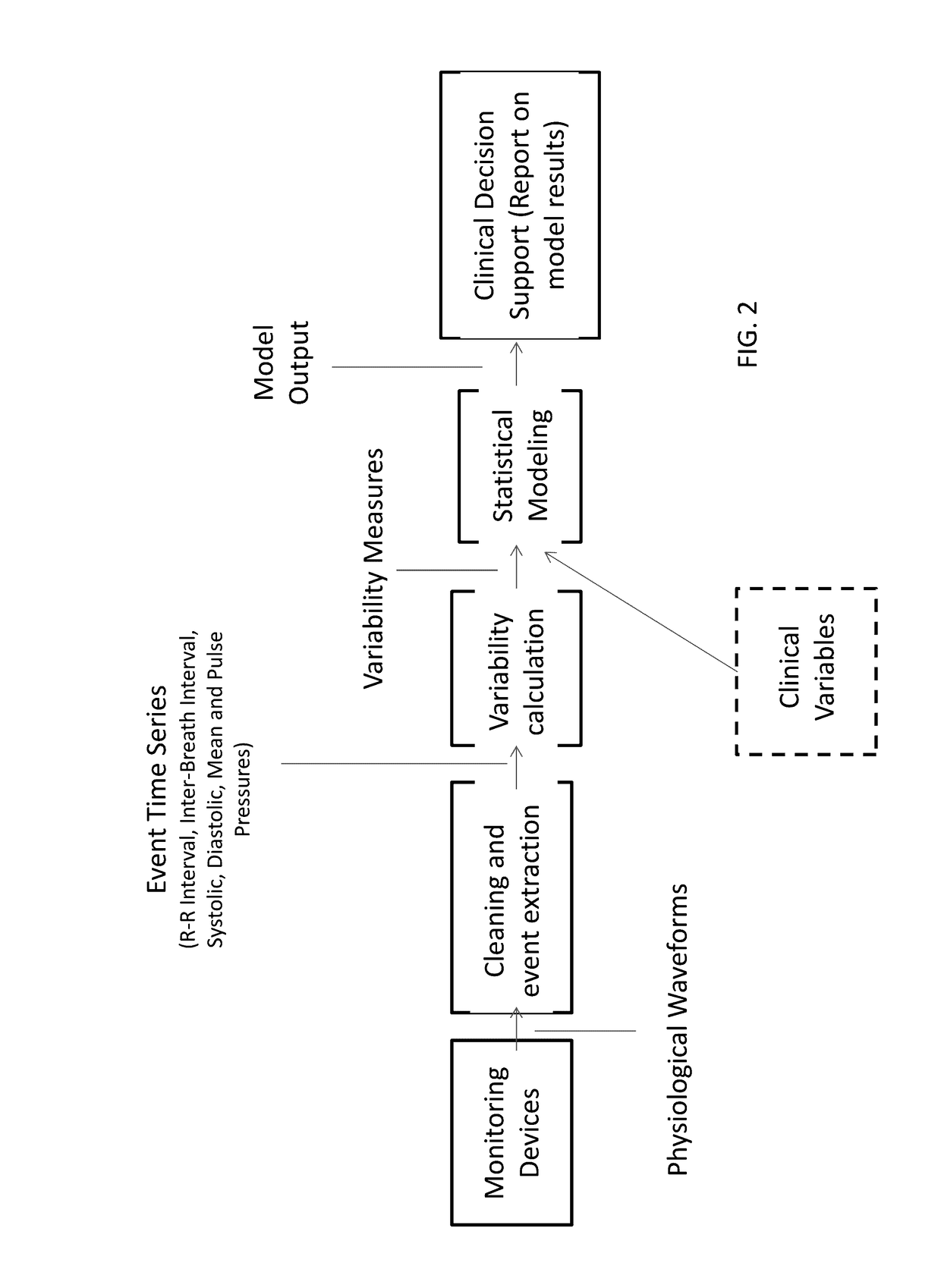System and Method for Assisting Decisions Associated with Events Relative to Withdrawal of Life-Sustaining Therapy Using Variability Measurements
a technology of variability measurement and decision-making system, applied in the field of system and method for assisting decision-making associated with events relative to withdrawal of life-sustaining therapy, can solve the problems of inability to predict, poor prognosis, and high probability of recovery, and achieve the effect of improving performance and outcom
- Summary
- Abstract
- Description
- Claims
- Application Information
AI Technical Summary
Benefits of technology
Problems solved by technology
Method used
Image
Examples
Embodiment Construction
[0028]It has been recognized that the variability of physiological waveforms can be employed to estimate the time to death after withdrawal of life sustaining therapy (WLST), and / or the time to inadequate organ perfusion. From the variability data one can derive an index subsequently used to determine the probability of death (or inadequate organ perfusion) within a given time frame in an automated fashion from bedside monitors in the intensive or post-anesthesia care unit. The resulting variability index can also be combined with the clinical variables used in, for example, other death prediction tools to enhance the use of such tools.
[0029]In at least one implementation, variability monitoring at the bedside could be used to provide estimates of the probability that a patient will die within a certain time frame after WLST. These estimates could be used to reduce the distress of the patients' families, as well as optimize the use of resources surrounding donation.
[0030]The followi...
PUM
 Login to View More
Login to View More Abstract
Description
Claims
Application Information
 Login to View More
Login to View More - R&D
- Intellectual Property
- Life Sciences
- Materials
- Tech Scout
- Unparalleled Data Quality
- Higher Quality Content
- 60% Fewer Hallucinations
Browse by: Latest US Patents, China's latest patents, Technical Efficacy Thesaurus, Application Domain, Technology Topic, Popular Technical Reports.
© 2025 PatSnap. All rights reserved.Legal|Privacy policy|Modern Slavery Act Transparency Statement|Sitemap|About US| Contact US: help@patsnap.com



